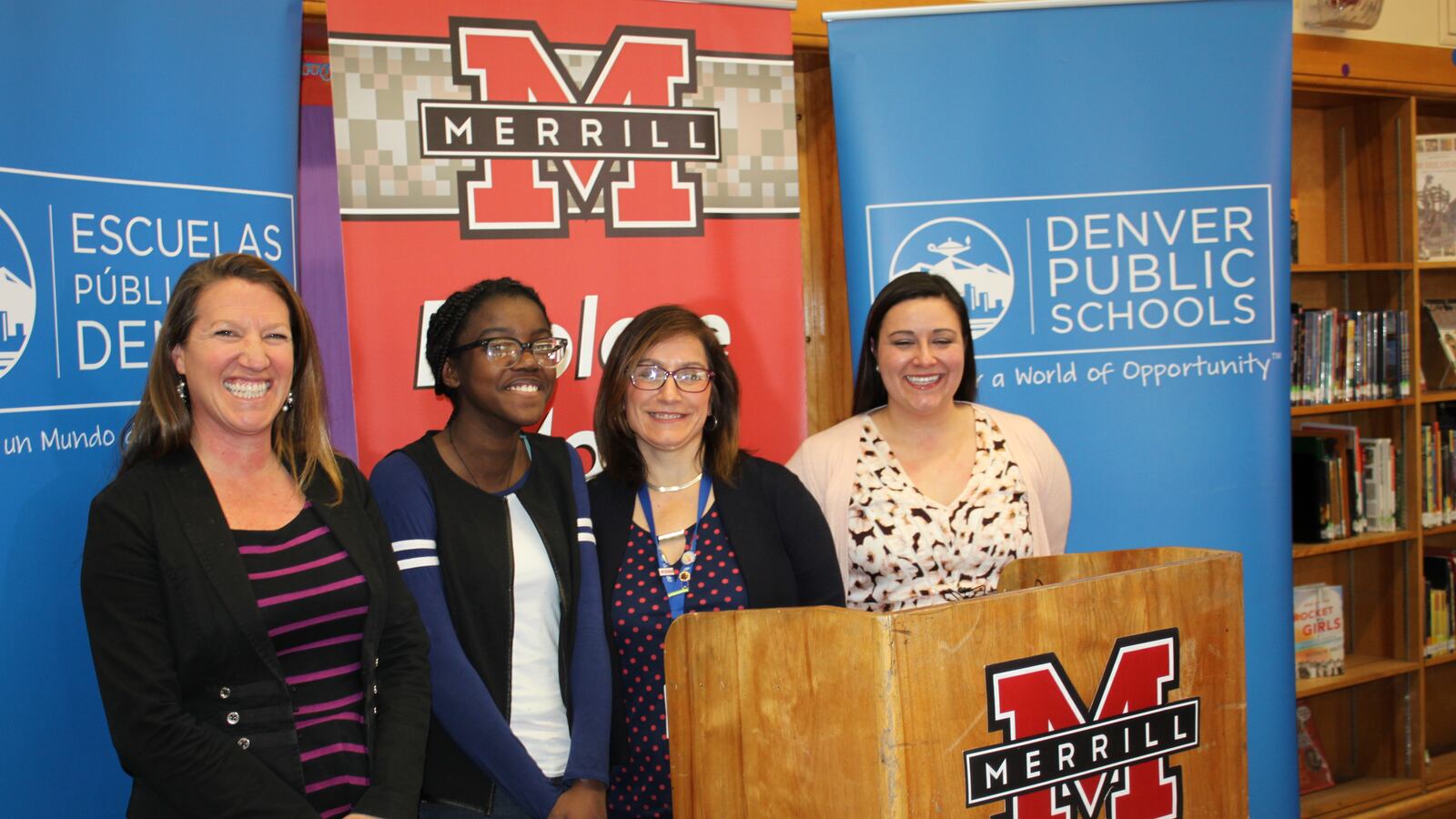The number of Denver students who participated in this year’s school choice process and who were matched to their school of choice stayed about the same as last year, according to data released Friday.
Denver Public Schools celebrated improvements, including spotlighting Merrill Middle School, a traditional district-run school that has increased the number of neighborhood students staying in the boundary school to about 60 percent from 47 percent five years ago.
Principal Christina Sylvester called the change “a tremendous increase,” and said the school was proud to be accepting 200 new students next year.
“We celebrate our diversity, we celebrate housing one of only two newcomer centers in Denver Public Schools,” Sylvester said. “We know that our diversity enhances the fabric of our school community and we’re so excited that neighborhood families are excited about that as well.”
A newcomer center is a program located within a select number of schools for students who are new to the country and may have had interruptions in their education.
DPS officials released the data for this year’s school choice process on the same day they planned to notify families of the results of the process for 2017-18 enrollment.
The choice process, now in its sixth year, allows families in Denver to list their top five school choices for next year. One form is used to enroll in any district school, including traditional district-run schools, magnet schools and charter schools.
“We know that our families thrive when their kids are in great schools and that’s why it’s a top goal for us,” said Susana Cordova, deputy superintendent for Denver Public Schools. “Our families have the opportunity to choose the best fit and focus for their kids and whatever works best for their families.”
But she added, “We always encourage families to look first at their neighborhood school.”
Overall, more than 23,000 families used the form to pick their school for next year.
DPS especially encourages the process for students entering transition grades of kindergarten, sixth grade or ninth grade. Among those students, 87 percent of kindergarteners, 87 percent of sixth-graders and 73 percent of ninth-graders participated in school choice process. The rates were almost identical to participation rates last year.
There were slight differences when it came to the number of students getting matched to their first-choice school among students entering high school. Of students filling out a choice form to enter ninth grade in the fall, 79 percent were placed into their first pick compared to 86 percent last year.
Officials attribute that drop to greater demand and a smaller number of available seats at East High School, a school that consistently gets listed as the top choice by hundreds of students.
A high proportion of students from Gilpin Elementary School, which the school board voted earlier this year to close, also were awarded their first choice. Of 136 Gilpin students who filled out a choice form, 130 got their first-choice school. Four students are leaving the district and did not fill out a form.
For Gilpin students, the top-choice was Whittier Elementary School, about a half mile away from Gilpin. DPS officials had suggested to Gilpin parents upset about the school closure, that they could consider other Montessori programs, including one at Garden Place Elementary and had assured families that they would get priority to attend those programs. But they weren’t a big draw for Gilpin students. Of the 136 who filled out a form, 12 listed Garden Place as their first choice and four listed the Montessori program at Lincoln.
The district on Friday also highlighted the number of open spots filled in high-performing DPS schools in the district: 92 percent, compared to the 67 percent of spots filled at low-performing schools.
“That means we have thousands more kids in our top performing schools in the city so that’s really good news for our students, really good news for our families,” Cordova said.
Last year, high-performing schools were more full than this year, and low performing schools were emptier. DPS officials said that change was in part because of fewer schools landing in their top ranks of high performance.

